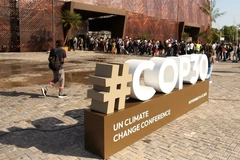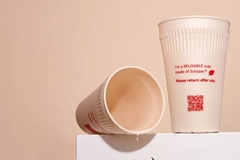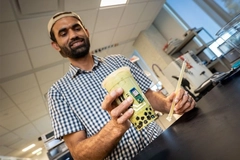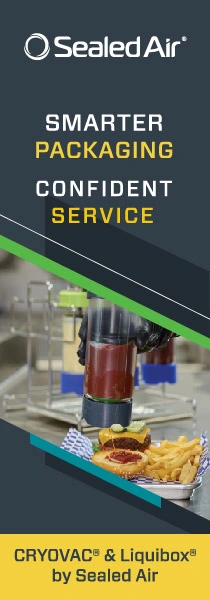Tetra Pak’s partnership with Fiat follows scepticism on cross-industry dipping
Fiat has become the first car manufacturer to incorporate recycled materials from used beverage cartons in a vehicle. The automobile manufacturer uses polyAI from Tetra Pak and other aseptic carton producers.
While Tetra Pak says the initiative promotes circularity, Paul Foulkes-Arellano, founder and director of Circuthon Consulting, refers to the collaboration as a “PR move.”
PolyAl is a blend of polymers and aluminium recovered during the cartons’ recycling process. The material will be used in the interiors of the new Fiat Grande Panda.
Foulkes-Arellano, a specialist in sustainable packaging and circular economy advocacy, says that such cross-industry dipping negatively affects the packaging industry by diverting sought-after resources.
But Tetra Pak says keeping materials in use requires more than just recycling. “It depends on creating viable, large-scale markets for recycled content. Expanding the end-product market for recycled polyAl is a top priority for us,” a company spokesperson tells Packaging Insights.
A PR move?
Foulkes-Arellano questions the environmental significance of Tetra Pak’s collaboration with Fiat. “It’s a hugely complex initiative sending resources outside the loop, because Tetra Pak didn’t develop a monomaterial container,” he tells us.
 Fiat Grande Panda’s interior uses Tetra Pak’s polyAI material from beverage cartons (Image credit: Tetra Pak).“Using polymer waste from Tetra Pak in Fiat cars is a PR move from a packaging business which has failed to produce the universally recyclable 100% pulp carton it promised back in 2017.”
Fiat Grande Panda’s interior uses Tetra Pak’s polyAI material from beverage cartons (Image credit: Tetra Pak).“Using polymer waste from Tetra Pak in Fiat cars is a PR move from a packaging business which has failed to produce the universally recyclable 100% pulp carton it promised back in 2017.”
“Packaging innovations such as aluminum bottles, Pulpex, and PHA bottles will erode their market share over time. Meanwhile, other car manufacturers are moving away from plastics altogether, using bio-based materials to improve sustainability.”
Tetra Pak responds: “Perishable foods like milk require robust protection to stay safe. That’s why Tetra Pak cartons are designed using aseptic technology, using multiple layers to preserve food quality without the need for preservatives or energy-intensive refrigeration.”
“This multilayer structure plays a vital role in global food systems — keeping food safe for months during transport and storage, even in regions far from farms or without reliable cold chains. The result: greater access to essential perishable food and a significant reduction in food spoilage and waste.”
Tetra Pak tells us that over the next 5–10 years, it plans to continue working to “simplify material structures, increase renewable and recycled content, minimize waste, and design packaging fully ready for recycling — without compromising food safety.
Carton recycling efforts
Foulkes-Arellano says the initiative is a “bodged fix of an inherently outdated multilayer pack.”
 PolyAl is derived from the PE and aluminum layers of Tetra Pak’s beverage cartons (Image credit: Tetra Pak).The company points out that paperboard in cartons is already widely recycled into products like napkins, tablecloths, and toilet paper.
PolyAl is derived from the PE and aluminum layers of Tetra Pak’s beverage cartons (Image credit: Tetra Pak).The company points out that paperboard in cartons is already widely recycled into products like napkins, tablecloths, and toilet paper.
“The use of recycled materials from beverage cartons in the Fiat Grande Panda is an example demonstrating the potential of these materials across multiple industries,” says the spokesperson.
“As we increase the fiber content and reduce plastic and aluminium, our cartons will become even more attractive to paper mills and recyclers — accelerating the shift toward a more circular packaging system.”
Tetra Pak also notes that while recycling challenges exist, progress is being made. In 2024, more than 1.3 million metric tons of used beverage cartons were collected and recycled, according to the company.
“To further strengthen this ecosystem, Tetra Pak invested €42 million (US$49 million) globally to support the collection, sorting, and recycling of our packages. Today, we collaborate with more than 200 recyclers worldwide — nearly half of whom are equipped to process polyAl,” the Tetra Pak spokesperson says.
But critics remain unconvinced. “Global carton recycling rates have stayed around 20%,” Foulkes-Arellano points out.
“That means 80% of the waste still goes to landfills or incineration. This kind of marketing move is no better than turning PET into non-recyclable textiles,” he continues.
The next steps for polyAI
Despite criticism, Tetra Pak argues that polyAl has unique advantages as a recycled material, particularly for automotive applications. It is homogeneous, widely available, and versatile in design.
The company says that, on average, beverage cartons consist of:
• Seventy percent paperboard — a renewable material sourced from FSC-certified forests and other controlled sources
• Twenty-five percent plastic — thin layers that prevent moisture and hold the structure together
• Five percent aluminum — an ultra-thin barrier that protects against light and oxygen.
 Tetra Pak cartons are designed with aseptic technology, using multiple layers to preserve food quality.According to Tetra Pak, LCAs demonstrate that paper fibers and other renewable content used in aseptic cartons reduce GHG emissions — “a key reason why beverage cartons’ carbon footprint is lower compared to single-use packaging made primarily from fossil fuel-based materials.”
Tetra Pak cartons are designed with aseptic technology, using multiple layers to preserve food quality.According to Tetra Pak, LCAs demonstrate that paper fibers and other renewable content used in aseptic cartons reduce GHG emissions — “a key reason why beverage cartons’ carbon footprint is lower compared to single-use packaging made primarily from fossil fuel-based materials.”
Cross-industry dipping
Highlighting the aesthetic appeal of polyAI, the spokesperson points to the “shimmering effect” of the aluminum content, which is described as matching the specific shade of blue required for the Grande Panda interior, while gaining the interest of several industries, including packaging solutions like crates and pallets.
The company says it is actively working with stakeholders across different geographies to expand polyAl recycling capacity and develop new end markets in order to ensure long-term sustainability.
“Our priority is to ensure that materials resulting from recycling processes hold commercial value, which is essential for building a sustainable circular economy,” Tetra Pak concludes.











